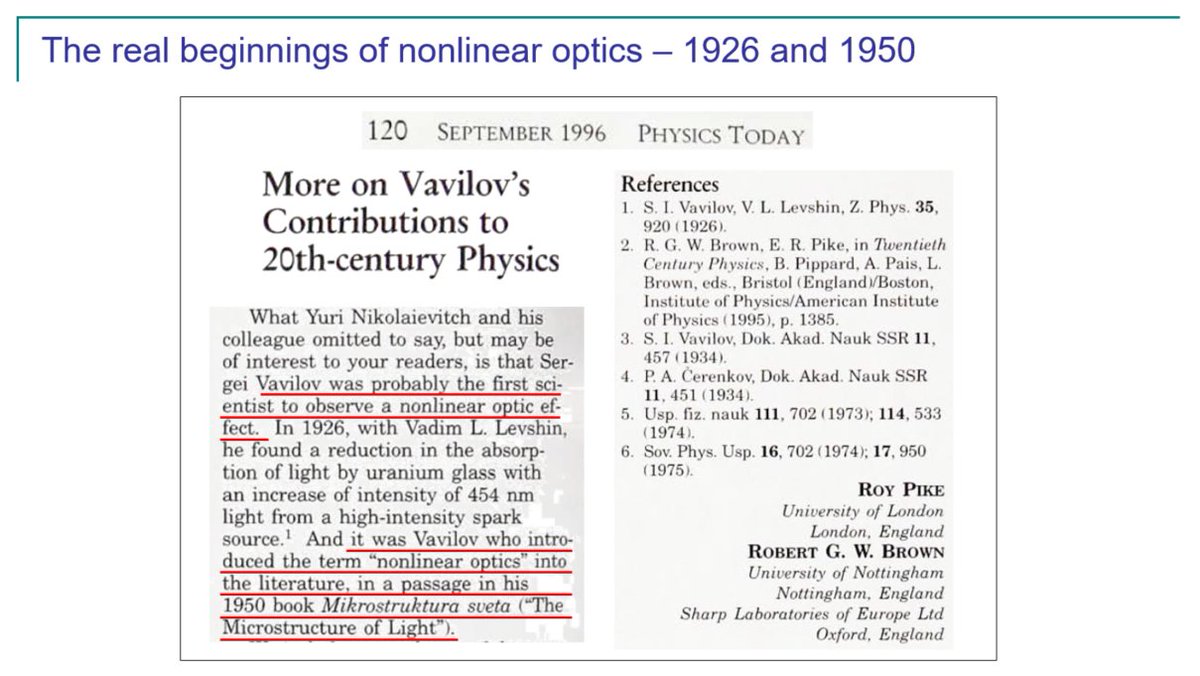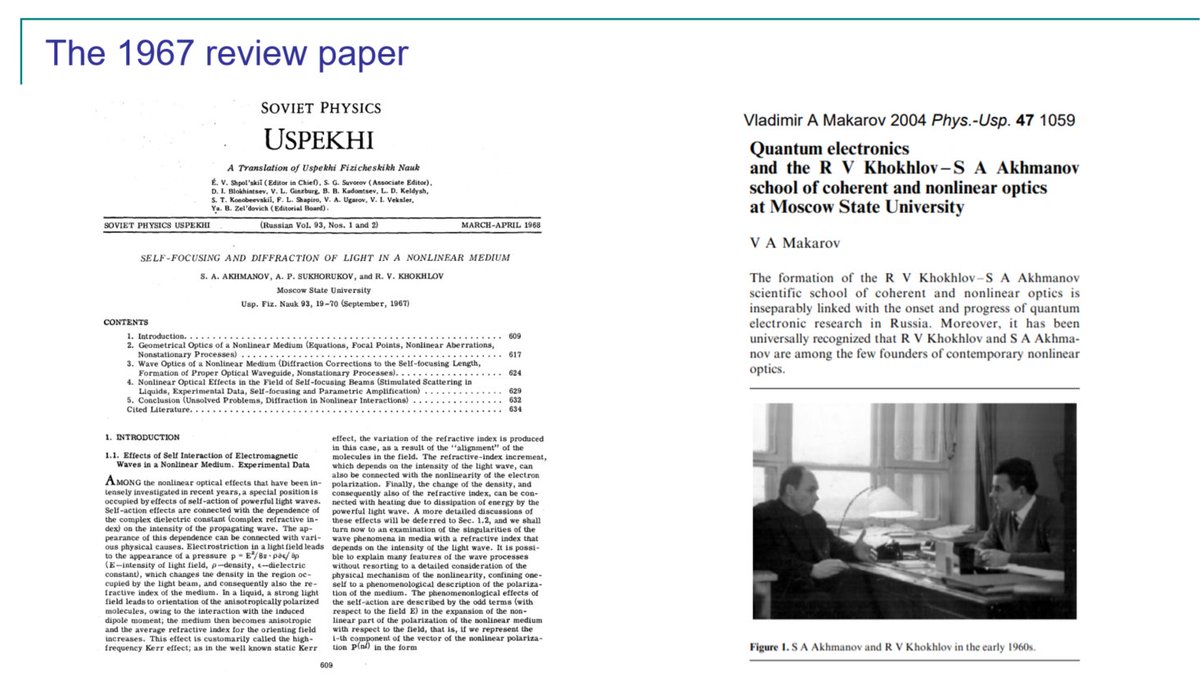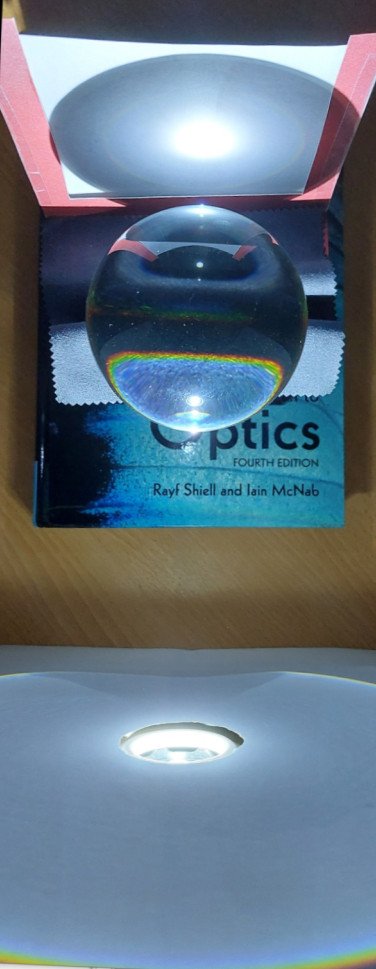I was honored to speak at Moscow State University last week for the 60th anniversary of laser nonlinear optics. But in fact, the first nonlinear effects in optics were observed in the pre-laser era by Vavilov in Moscow in 1926! Here are some slides from my talk (thread). 

Sergey Ivanovich Vavilov (Серге́й Ива́нович Вави́лов) was a giant of physics. He invented the term "nonlinear optics" in his 1950 book & was co-discoverer of Cerenkov radiation. Regrettably he died before the Nobel Prize for Cerenkov radiation was awarded in 1958. 

Brown and Pike give the translation of how he introduced nonlinear optics in a chapter in the wonderful book Twentieth Century Physics (Eds Brown, Abraham Pais, A. B. Pippard 1995). 

An excellent overview of how both Western & USSR-era optics developed post-laser is given in @jeffhecht 's fantastic article in @OPNmagazine osa-opn.org/home/articles/… The article includes the photo of the first self-focusing experiment that kicked off the study of spatial solitons. 

Chiao, Garmire and Townes published the theory of spatial solitons in October 1964, which included the first statement of the cubic NLSE in optics and the sech-soliton solution. 

But was it the first? In June 1965 Townes published a correction, acknowledging earlier work by Askarjan and Talanov. Reprints of these hard to find early papers are in the edited volume by @BoydNLOLab et al. 

In December 1966, Akhmanov, Sukhorukov and Khokhlov published further independent theoretical studies studying the cubic NLSE, giving many references from Russian authors! 

The experimental confirmation came from Bloembergen's group, and were published in December 1965. Bloembergen made sure to cite Askarjan and Talanov! 

Akhmanov, Sukhorukov and Khokhlov published a long review paper in 1967 and established the Russian school of nonlinear and coherent optics. 

In 1967, Khokhlov & Akhmanov received the Lenin Prize, celebrated with a mural of them both riding a horse upon an SHG crystal converting red to green. It was on the wall for many years at Moscow State University. This photo is from @jeffhecht 's article. Where is the mural now? 

Much early Russian work foreshadowed current areas of research that we are only just beginning to fully understand. For example, pulse buildup in mode-locked lasers. 

Interestingly, the Dispersive Fourier Transform (DFT) technique which is now a key tool in measuring such laser buildup dynamics dates back to the 1980s - Akhmanov described the DFT stretched pulse as the "spectron" 

Conclusion. Although the work at Columbia, Hughes, Harvard, Bell Labs & elsewhere was pioneering & vital to the technologies we now enjoy, we mustn't forget that the early days of laser and nonlinear optics were extremely international, and we owe all these giants our gratitude! 

• • •
Missing some Tweet in this thread? You can try to
force a refresh























